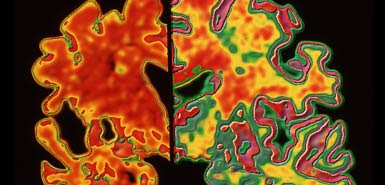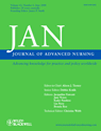Two workshops on Infrastructures in Health Care
'Infrastructure' is a word of our time with both reductionist and wholist connotations. The 4P's of PROCESS, POLICY, PURPOSE and PRACTICE can be found here together with at least several C's: COMMUNICATION, CO-ORDINATION, COLLABORATION and COMPLEXITY. So, here for 2009 is an infusion of the socio-technical at two health infrastructure events:
Call for Papers: 2nd International Workshop
Infrastructures for Health Care: Connecting practices across institutional and professional boundaries
June 18-19, 2009, University of Copenhagen, Denmark
Scope
The 1st international workshop: Infrastructures for Health Care was held at the Technical University of Denmark in June 2006. It attracted researchers, health care professionals, IT professionals, administrators, and others engaged in the development of infrastructures and new, integrated applications and services for improving the quality of health care services. The purpose of this 2nd international workshop is to continue this forum for discussing current issues and trends related to the integration and coordination of health care practices across institutional, organizational, and professional boundaries.
The health care sector is characterized by a worsening shortage of personnel and endlessly growing costs caused by the development of new treatments in combination with rising demands for treatment, which are associated with an aging population and an increase in chronic diseases. Against this backdrop, policy makers, health care professionals and researchers show an increased interest in innovative systems of care, which improve communication, coordination and collaboration among patients/citizens, care providers in primary care and specialty services (clinics, hospitals, emergency departments, old people's homes etc.). Concepts like shared care, integrated care and continuity of care are indicative of ambitions of creating coherent and effective health care services for patients that require complex - and often long-term - care. Although these concepts are often used in relation to projects that seek to enhance communication, coordination, and collaboration around particular patient groups, they also have bearing on more general visions of reorganizing health care.
Infrastructural arrangements - such as electronic patient records, classification schemes, accounting systems, communication standards, and quality systems - play a crucial role in these new models of care, and it is increasingly hard to imagine integrative initiatives that do not have a strong IT component. This raises a multitude of questions about the - actual and imagined - role and impact of IT and other infrastructure components in the development of patient-oriented, integrated healthcare services.
We wish to highlight how new infrastructures - socio-technical assemblages - simultaneously connect existing practices, influence and change these practices, and create entirely new practices in health care work (e.g. related to the maintenance of the infrastructure itself). What characterizes infrastructures in health care? What role do they play in transforming and reorganizing health care and in creating new actors in health care? How are infrastructures established and maintained? What is the impact on work practices, organizational structures, cost effectiveness, quality of care, etc.?
Topics of Interest
Our aim is to bring together researchers, health care professionals, IT professionals, administrators and others involved in establishing infrastructures and/or developing new, integrated models of healthcare. We seek practical case studies as well as empirical and theoretical research contributions. Topics of particular interest include, but are not limited to the following:
* Infrastructures as socio-technical achievement in health care
* Health care organizations and infrastructures
* Infrastructures and new patient practices
* Designing infrastructures for health care
* Economic aspects of infrastructures for health care
* Myths of infrastructures
* Infrastructures and politics
* Managing infrastructures
We encourage potential participants to submit an abstract (3-500 words) describing the contribution before March 1, 2009. Abstracts must be submitted by email to
infrastructures2009 AT sundhedsITnet.dk
After the conference, a selection of the contributors will be invited to submit a full paper to an edited - and fully reviewed - book or special issue (to be decided).
List of important date
Submission of abstracts 2nd of March 2009
Notification of acceptance 1st of April 2009
Deadline for registration 15th of May 2009
Conference 18th - 19th of June 2009
Workshop Co-Chairs
Finn Kensing, University of Copenhagen, Denmark
Jørgen P. Bansler, Technical University of Denmark
For abstract submission and further information, contact
infrastructures2009 AT sundhedsITnet.dk
We are looking forward to an exciting workshop!
==================================
The other event is in April (and has already closed in terms of submissions):
Health and Care Infrastructure Research and Innovation Centre
HaCIRIC International Conference 2009 -
Improving healthcare infrastructures through innovation
2-3 April 2009, Hilton Metropole, Brighton
The conference will bring together researchers and practitioners from across disciplines and countries with different healthcare systems to focus on how to use innovation to improve the delivery and operation of healthcare infrastructure. Areas of particular interest include:
Integrating infrastructure and service planning
Can we translate service planning into infrastructure asset planning more effectively? Are moves towards greater contestability and a local devolution of responsibilities making this harder? What lessons are there from different national health systems? What tools, models and performance metrics are appropriate?
Stimulating innovation in infrastructure provision
How can procurement and incentivisation models be designed to deliver innovation? Can policy targets be used more effectively? How do we ensure that innovation is embedded on a sustainable basis? How can the design process be more effectively used to generate innovation? How do we capture and diffuse knowledge of innovative solutions?
Examples of infrastructure innovation targeted at key problems
Healthcare acquired infection is an example of an area where a multi-disciplinary approach embracing service delivery, behavioural and infrastructure change is needed. We are interested in case studies and research reporting on how this has been tackled, as well as the methodological challenges in conducting such research.




















![Dept of Health [UK] logo](https://blogger.googleusercontent.com/img/b/R29vZ2xl/AVvXsEhztmroEIA7zKSBJ7WW-PXyjoPUNDA5_CZ0ZnWcNdymBgSKIEBM5kpf4BIpCiJUvD2oW-pTnuwMR9AzbnExNWqGHq52-quhPb6pAjb9NStbrjedAA2g4E8YWakQWJ5OqUfcz0t4/s400/dhlogo.gif)





 orcid.org/0000-0002-0192-8965
orcid.org/0000-0002-0192-8965